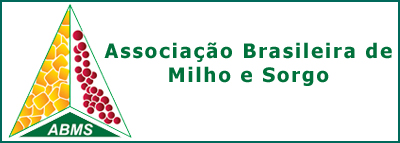SELECTIVITY OF HERBICIDES APPLIED ALONE AND IN TANK MIXTURES TO SWEET SORGHUM IN POST-EMERGENCE
DOI:
https://doi.org/10.18512/rbms2021v20e1205Palavras-chave:
biomassa, Sorghum bicolor L.Resumo
The small number of herbicides registered for sorghum (Sorghum bicolor (L.) Moench) restricts its cultivation. The aim of this study was to evaluate the selectivity of herbicides applied alone or in tank mixtures to sweet sorghum in post-emergence. Two experiments were conducted in greenhouse, the first with herbicides applied alone and the second with herbicide mixtures. Based on the results of greenhouse experiments, treatments were selected to evaluate selectivity in the field. In the field experiment, the herbicides applied alone and herbicide mixtures did not differentiate from the control without herbicide application regarding to phytotoxicity, fresh mass of the aerial part, percentage of dry mass of the aerial part and Brix of sweet sorghum at 28 days after application. The treatments considered selective were: atrazine (1000 to 2000), bentazon (360 to 720), S-metolachlor (576 to 864), mesotrione (48 to 150), carfentrazone (4 to 8), 2,4-D amine (335 to 670), besides mixtures with [atrazine + S-metolachlor] [601 + 471.2] and [901.5+ 706.8], atrazine + 2,4-D amine (1000 to 2000 + 100.5 to 268), atrazine + tembotrione (1000 + 42 to 63) and atrazine + mesotrione (1000 + 48 to 72) (doses in g a.i. ha-1).
Downloads
Publicado
Como Citar
Edição
Seção
Licença
Autores que publicam nesta revista concordam com os seguintes termos:- Autores mantém os direitos autorais e concedem à revista o direito de primeira publicação, com o trabalho simultaneamente licenciado sob a Creative Commons Attribution License que permitindo o compartilhamento do trabalho com reconhecimento da autoria do trabalho e publicação inicial nesta revista.
- Autores têm autorização para assumir contratos adicionais separadamente, para distribuição não-exclusiva da versão do trabalho publicada nesta revista (ex.: publicar em repositório institucional ou como capítulo de livro), com reconhecimento de autoria e publicação inicial nesta revista.
- Autores têm permissão e são estimulados a publicar e distribuir seu trabalho online (ex.: em repositórios institucionais ou na sua página pessoal) a qualquer ponto antes ou durante o processo editorial, já que isso pode gerar alterações produtivas, bem como aumentar o impacto e a citação do trabalho publicado



